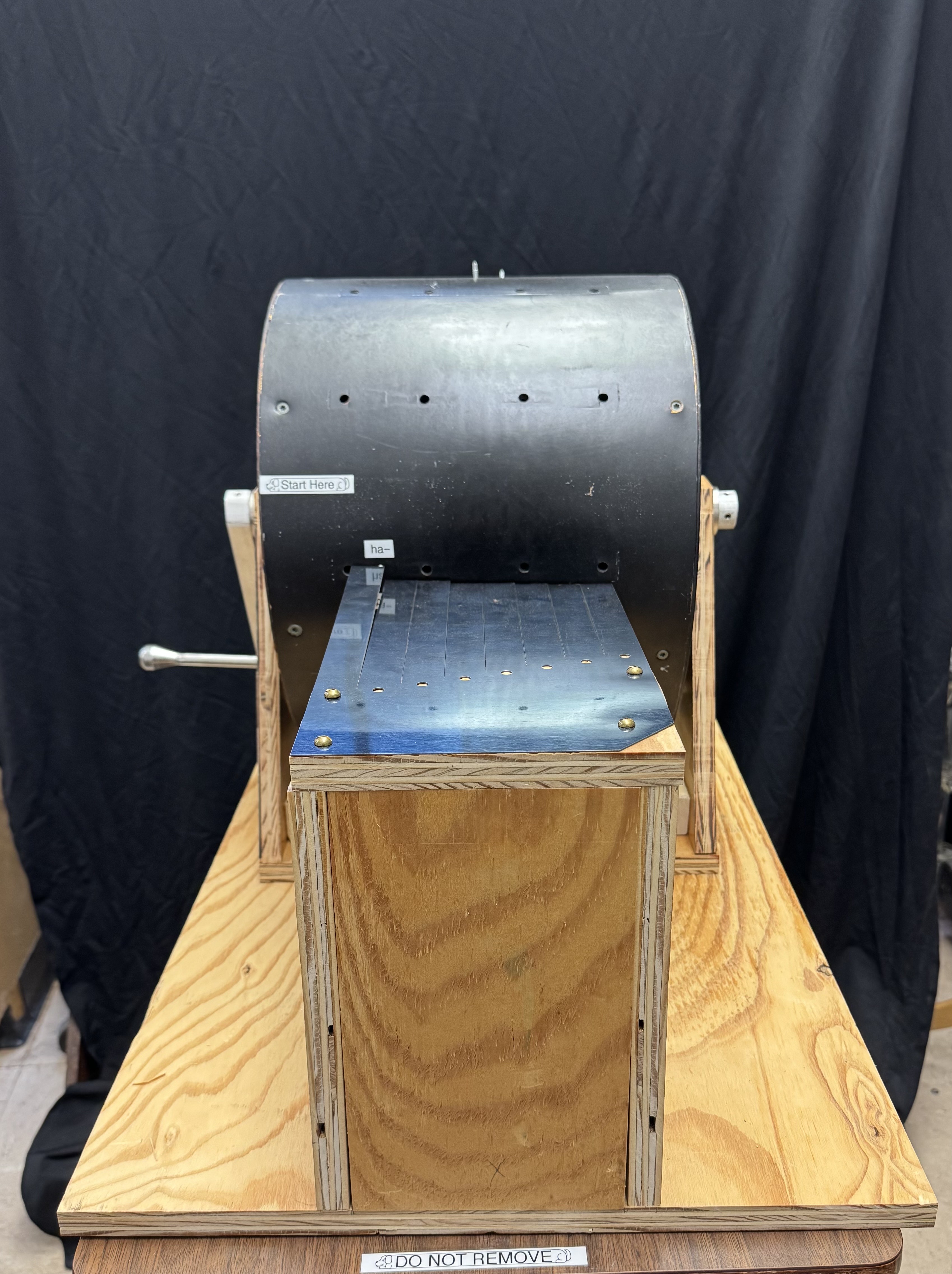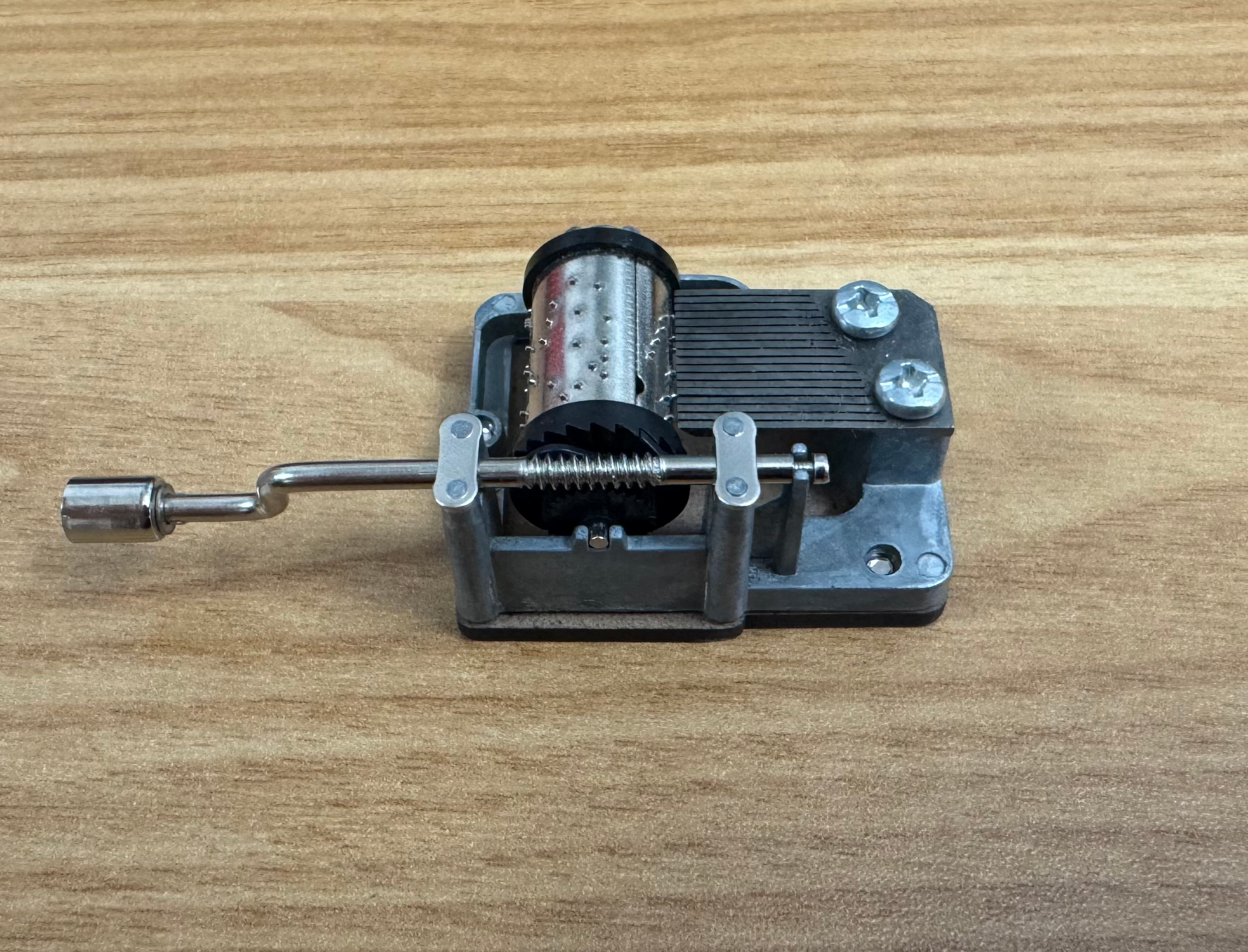3D40.60 • Music Box
Location: Floor Demo

 Photo shows the demonstration used at the University of Texas at Austin.
Photo shows the demonstration used at the University of Texas at Austin.


 Photo shows the demonstration used at the University of Texas at Austin.
Photo shows the demonstration used at the University of Texas at Austin.
Concepts Conveyed:
- Shows how a music box works on a fundamental level in a larger view.
- As the prongs hit the comb, it will cause them to vibrate at a specific frequency, acting as a simple harmonic oscillator, which will produce a sound.
- The longer the prongs (the further the prongs from the comb’s edge), the slower the comb will vibrate, resulting in a lower pitch. Shorter prongs will vibrate the comb faster, producing a higher sound.
- The thickness of the comb of a normal music box also varies. Longer teeth (lower notes) are typically weighted at the end, which lowers their resonant frequency. However, since this is just a model, the thickness of the comb is all even.
Instructions / Notes:
- DISCLAIMER: The music box is just a model, so the notes played will not be accurate. This is due to the material of the comb not being the same as a typical comb.
- Turn the drum of the music box by using the handle so that the prongs hit the bottom of the comb (counter-clockwise). Start where the drum is labeled “Start Here”.
- The first two notes should be the same (the beginning of Happy Birthday), although you may have to listen very carefully to hear it.
- Each prong is labelled with its corresponding syllable in the song.
Demo Staff:
- Make sure the professor knows this is just a model.
- Ensure all the prongs can hit the comb when testing. If not, adjust the distance of the barrel to the comb.
- Be careful with the prongs when transporting! They can be sharp.
- Provide the little music box too!! It actually makes music.

Last updated on April 14, 2025
